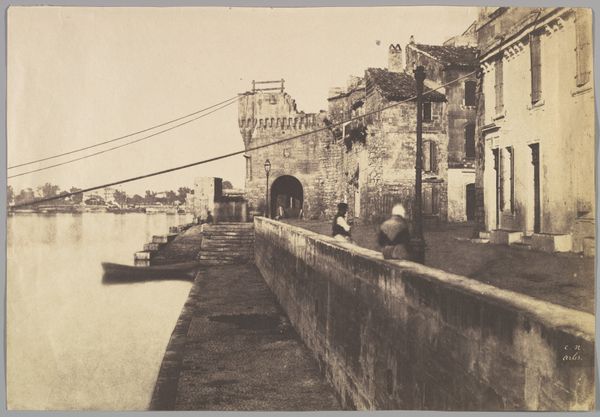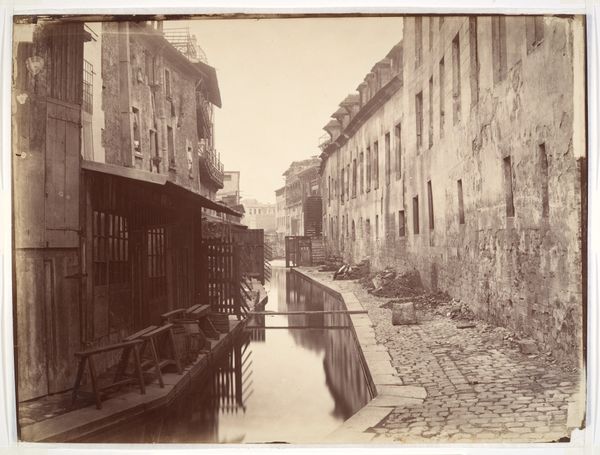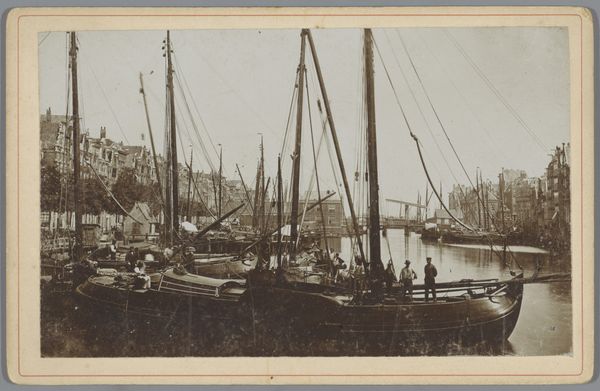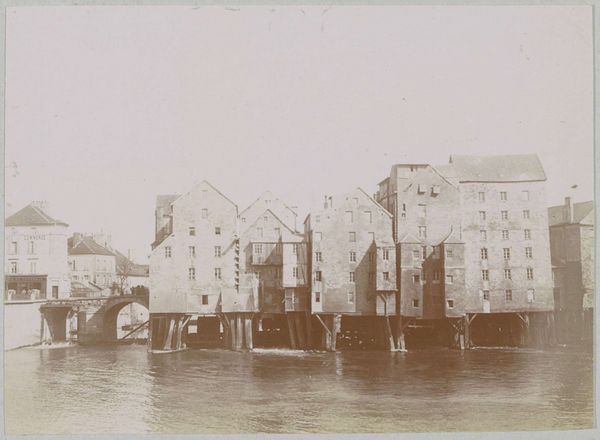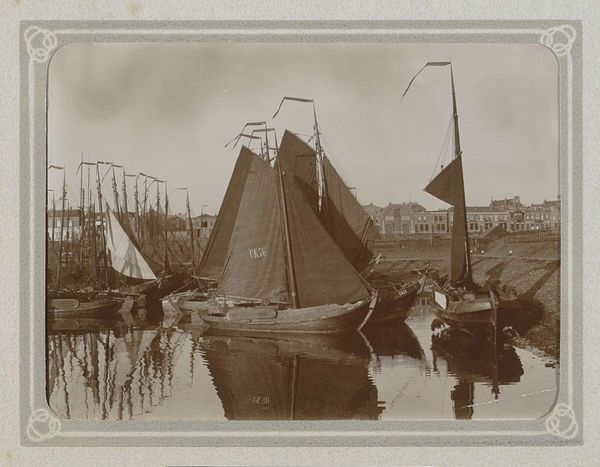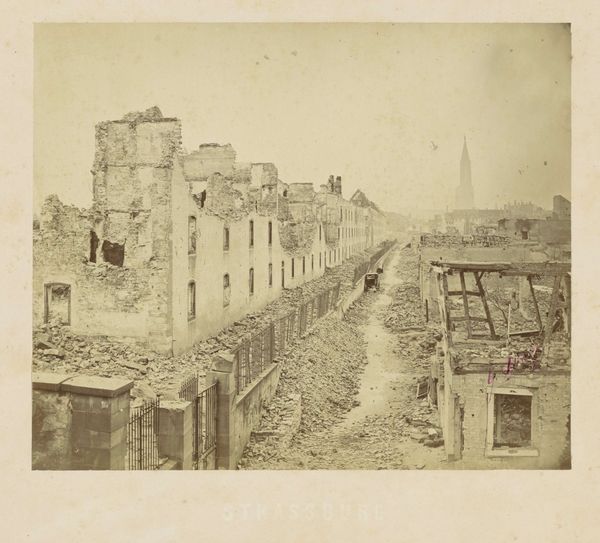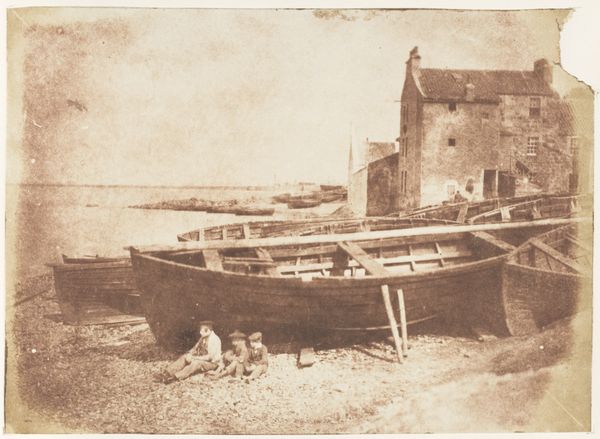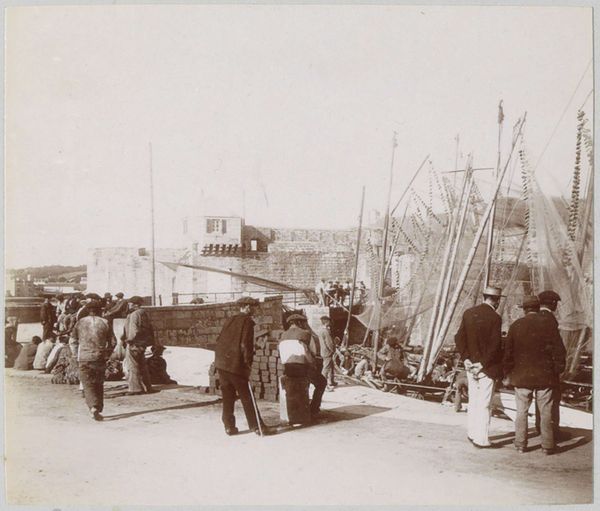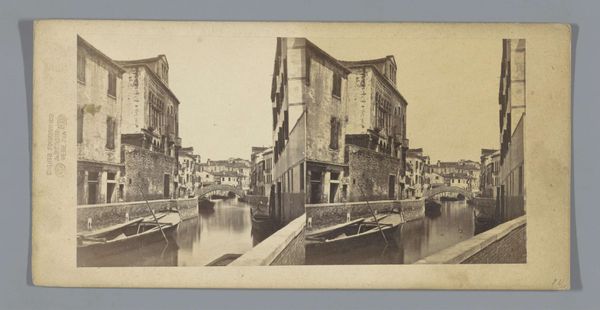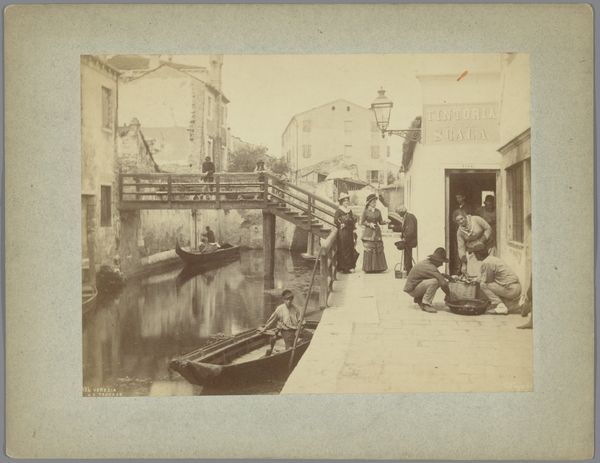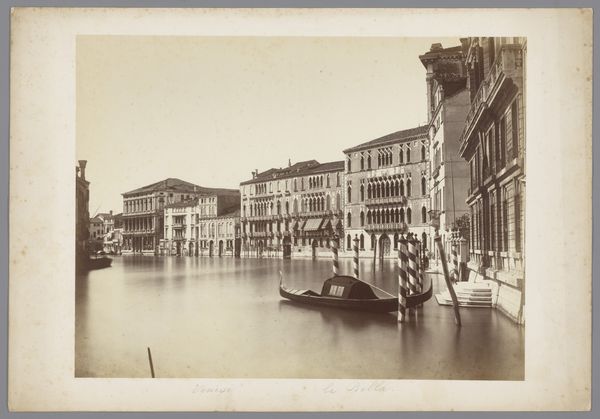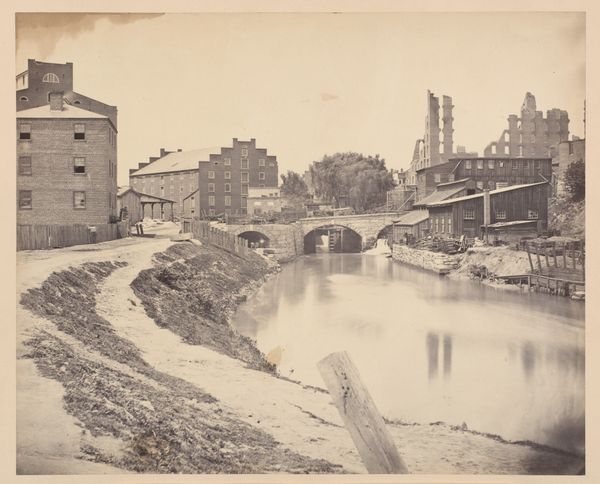
Dimensions: sheet (trimmed to image): 20.4 x 15.8 cm (8 1/16 x 6 1/4 in.)
Copyright: National Gallery of Art: CC0 1.0
Editor: So, this is Alfred Stieglitz's "On the Bridge—Chioggia," a gelatin-silver print, possibly taken between 1887 and 1897. It really gives off this amazing old-world vibe, doesn't it? There's a sense of everyday life captured. What's your take on this piece? Curator: The "old-world vibe" you mention is key. Stieglitz, though American, was deeply influenced by European art movements. He was promoting photography as fine art, but within a context where painting, particularly Impressionism, reigned supreme. So, what visual elements here remind you of Impressionism, and how might Stieglitz be using photography to position it as equal to painting? Editor: Well, the soft focus maybe, and the way the light reflects on the water? It's not super sharp, which feels more like a painting. Was he trying to make a point about photography's role in documenting society too? Curator: Precisely! Stieglitz understood that the public perception of art was shaped by institutions like galleries and salons. He deliberately blurred the lines to elevate photography. Also, the scene itself - everyday people on a bridge, the working boats - points to an interest in documenting contemporary life, something very relevant to social realism as well. Do you think he romanticized this scene or captured it authentically? Editor: I think it's both. There is a definite eye for composition, but there are also so many ordinary folks just hanging out on the bridge. Does the location itself play a role in the photograph's message? Curator: Absolutely! Chioggia, a fishing town near Venice, wasn't a major art hub like Paris. Stieglitz might be saying that artistic merit can be found anywhere, not just in established centers. Or is he just indulging the common exoticization of Italy and its people for a western audience? Editor: It's interesting to think about those layers. Thanks, I didn't quite consider how his choice of subject fits into his broader aims and that social and political context. Curator: My pleasure. Reflecting on these social layers allows us to see how even a simple photograph engages with wider artistic and societal dialogues.
Comments
No comments
Be the first to comment and join the conversation on the ultimate creative platform.
